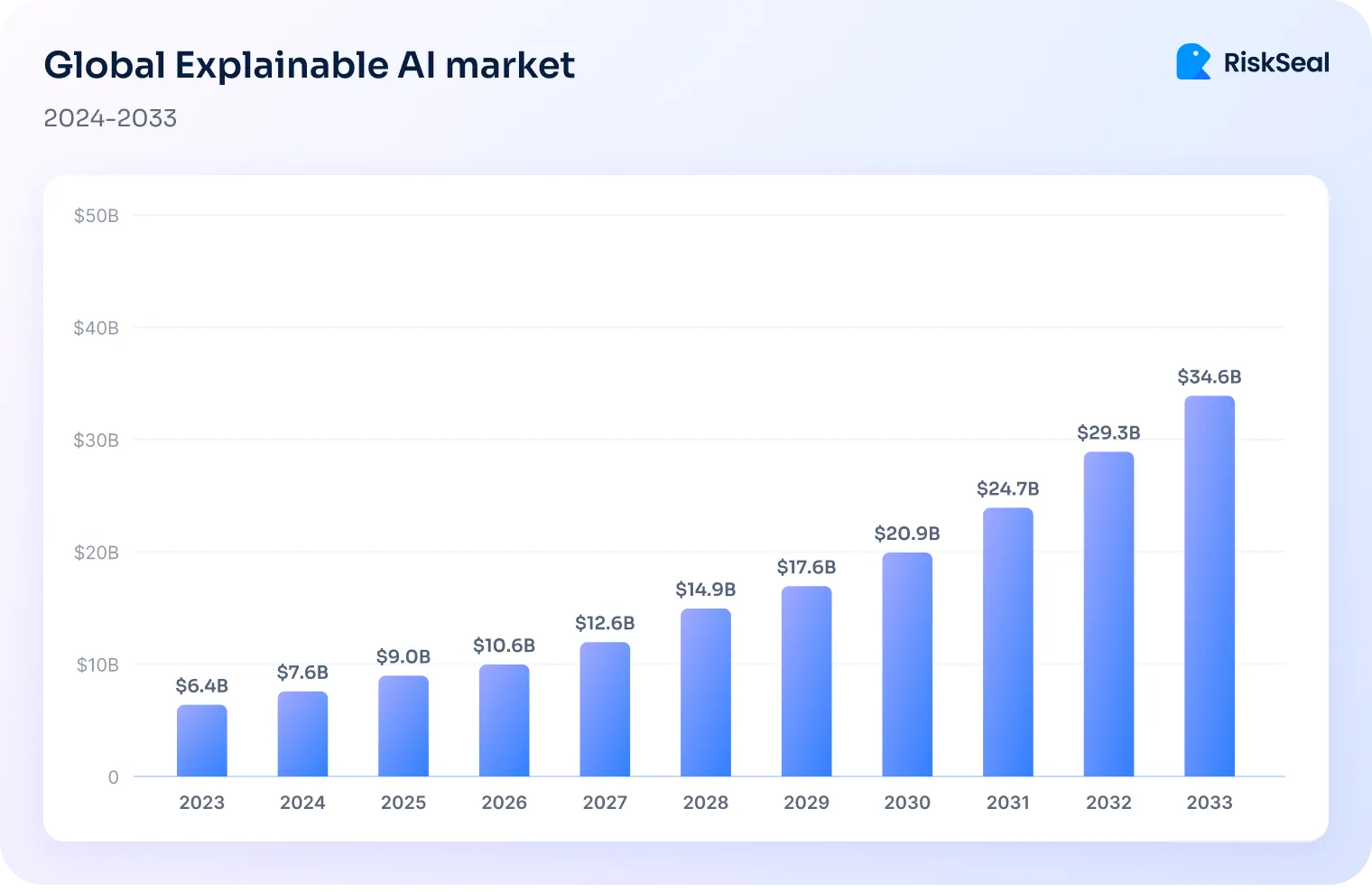Learn what Explainable AI is and how it affects credit risk assessment.

The Explainable AI market was worth $6.4 billion in 2023 and is projected to grow to $34.6 billion by 2033. This is an average increase of 18.4% every year.

Lenders need Explainable AI to stay competitive and build trust through clear, transparent models that show why decisions were made.
Explainable AI (XAI) refers to machine learning models that make their decision-making process clear and easy for humans to understand.
The process of using this type of AI typically involves the following steps:
With Explainable AI, lenders can evaluate risks, like the probability of default, and understand exactly why the model made that conclusion.
Explainable AI and white-box AI aim to make machine learning more transparent, but they’re not the same.
XAI can help make even complex models more understandable, while white-box AI is straightforward to interpret right from the start.

AI explainability in credit decisions means making the reasons behind approvals or rejections clear.
Lenders, borrowers, and regulators all benefit from seeing which data and factors shaped each outcome.

As AI becomes more common in lending, financial institutions must be able to explain their decisions. Regulations now require them to show the reasoning behind every approval or rejection.
Unlike blackbox AI, Explainable AI in credit scoring doesn’t just produce a number. It reveals the key drivers behind it. By making these data points transparent, lenders can ensure their credit process is easy for everyone to follow.
Explainable AI brings practical advantages that help risk teams make better, fairer decisions:
By making decisions easier to evaluate and improve, Explainable AI helps risk teams build more trust and drive better results.
The most common challenges of implementing Explainable AI in credit decision making include:
These challenges mean credit organizations may want to look at alternative data providers that already have explainable AI built in.
Credit risk AI is an essential technology for lending decisions because it makes them clearer, fairer, and easier to trust.
By tackling its challenges or working with data providers who already use Explainable AI, lenders can reduce bias and make better decisions, especially when applying AI in credit risk management.